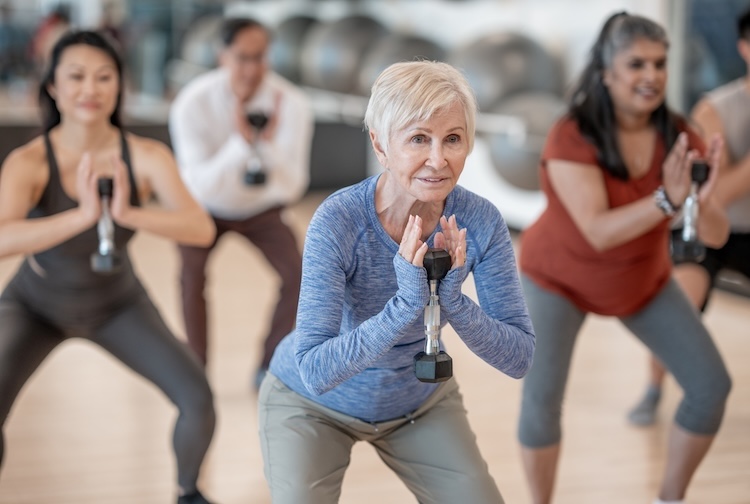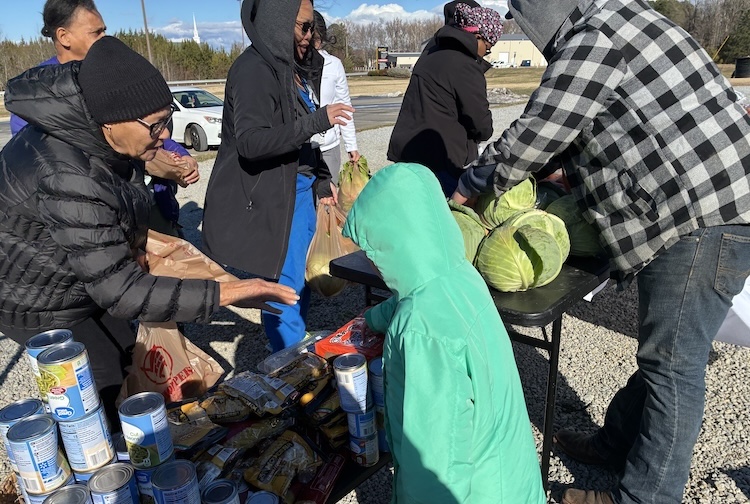Reducing fall risk for aging adults – what works and why
Insights from a VCU Health expert who helps older adults improve their balance and strength.
September 22, 2025 Staying active with strength training or Tai Chi helps to develop more balance, flexibility and endurance, which in turn reduces fall risk. (Getty Images)
Staying active with strength training or Tai Chi helps to develop more balance, flexibility and endurance, which in turn reduces fall risk. (Getty Images)
By Sara McCloskey-Nieves
When was the last time you felt off-balance? And we’re not talking about physically. For older adults, standing up and staying upright isn’t solely about muscle strength – it’s about confidence and independence.
A fall can sometimes take away the freedom of living on your own and can cause serious injuries – even death. Fortunately, most falls are preventable and there are many ways you can improve your balance and strength.
Amanda Rudderman, MSW, the fall prevention coordinator for VCU Medical Center’s Trauma Injury and Violence Prevention Program, has helped hundreds of patients through the “A Matter of Balance” program.
“You’re not alone and your fear is valid, but it doesn’t have to control your life,” Rudderman said. “Most falls are preventable with the right support, education, and small changes. You can regain confidence and keep moving.”
To help you reclaim your confidence and independence, we asked Rudderman to share some of her clinical insights and practical tips to improve balance and reduce fall risks.
What are the most common types of injuries caused by falling?
Falls can result in a range of injuries from bruising and small skin tears to more serious conditions. The Level I trauma center at VCU Medical Center commonly sees patients with injuries sustained from a fall like bone fractures, lacerations and head injuries. Falls and the fear of falling can also cause emotional distress impacting our confidence, relationships and ability to function independently.
Who is most at risk of having severe injuries because of a fall?
Older adults are at an increased risk of experiencing a fall and they are more likely to sustain a serious injury when they do happen. One out of four people over age 65 experience a fall each year, and their risk of another incident doubles after experiencing one fall. Fall-related injuries are the second most common trauma alert for adults at VCU Medical Center, and they’re by far the most common cause of injury for adults over 60 years old.
People with medical conditions can be at an increased risk of falling too, regardless of their age. It’s helpful to understand our personal risk factors so we can reduce the risks or create accommodations wherever possible.
Are there certain medical conditions that can make older adults more susceptible to falls and fractures?
Our bodies change as we age and some of those changes can contribute to fall risk factors. However, that doesn’t mean that falls, fractures, other injuries and their consequences are a normal part of aging. We can prioritize our health in ways that also prevent falls.
Weak bones (osteoporosis) and loss of muscle mass (sarcopenia) can make it harder to maintain stability when walking and standing, causing falls and a harder recovery after an injury. Other conditions like diabetes, orthostatic hypotension (sudden drop in blood pressure), arthritis, vision or hearing impairments, cognitive decline, and even depression and anxiety are associated with fall risk. Fortunately, these are conditions that can be managed to reduce their impact on fall risk through healthy behaviors and supports.
What kind of activities or lifestyle changes can help older adults strengthen their balance and prevent falls?
Most falls are considered multifactorial, meaning there are several things happening at once to create a fall risk. That also means there are many things that we can do to build strength, balance and skills that prevent falls.
- Start small: Make sure to stay hydrated and wear supportive footwear when you’re doing any activity. These small steps can help you stay clear-headed and balanced throughout the day.
- Talk to your primary care provider about fall risks: It’s always important to work with your care team to follow through on recommended health screenings and treatments to manage potential medical conditions. If you are concerned about your balance, tell a medical professional. Unfortunately, many older adults do not disclose if they are concerned about falls and that is a missed opportunity for improvements.
- Request specialized care: Check with your provider about requesting an evaluation with a physical therapist or occupational therapist if you feel out of balance. They can be a valuable part of your care team for fall prevention.
- Stay active: Routine exercise helps us build strength, balance, flexibility and endurance – all needed to move around safely. Try activities like walking, strength training or group and virtual fitness classes catered to older adults. Tai Chi and the “A Matter of Balance” program at VCU Health are also examples of evidence-based programs proven for fall prevention.
- Remove fall hazards from your home: Look through your home for dim lighting, rugs, loose cords and clutter. Consider practical improvements like installing grab bars in the bathroom and moving frequently used items within reach in your kitchen cabinets. Also, set up an emergency response system so that you can call for help if a fall does occur while you’re alone.
- Find a support system: Family, friends and loved ones are essential to include in our fall prevention goals. Advanced planning will prevent falls and help prepare for the best outcomes in a time of need. This is a good way to maintain your independence and interests while still feeling supported when you need it.
VCU Health’s A Matter of Balance program is a resource for older adults to learn about physical activities that can reduce their risk of falling. What do participants do during the program?
A Matter of Balance is an evidence-based program that addresses the fear of falling and promotes physical activity. This 8-week workshop is hosted throughout the community with partner organizations. The interactive sessions include group discussion, gentle exercises and practice problem-solving strategies to identify and reduce the risk of falls.
Participants learn exercises that increase their balance, strength and flexibility, and identify personal fall risk factors related to chronic health conditions, medications and home safety hazards. They learn how to advocate for themselves during doctor visits, with loved ones and in social settings, while developing personalized goals and action plans to implement new exercise routines and safety strategies into their lifestyle.
VCU Health’s fall prevention program recently received a grant from the National Council on Aging through the ACL Innovation Lab. How will the grant help to expand the program and resources in the community?
The National Council on Aging through the ACL Innovation Lab’s grant will allow us to pilot a new initiative that connects older adults hospitalized due to a fall-related injury with individualized support starting at the inpatient bedside and following them home. This initiative aims to support patients in setting goals and making changes that will improve their confidence and reduce their fall risk. We will also work alongside community stakeholders, partners and providers to shape and share best practices.




.jpg)